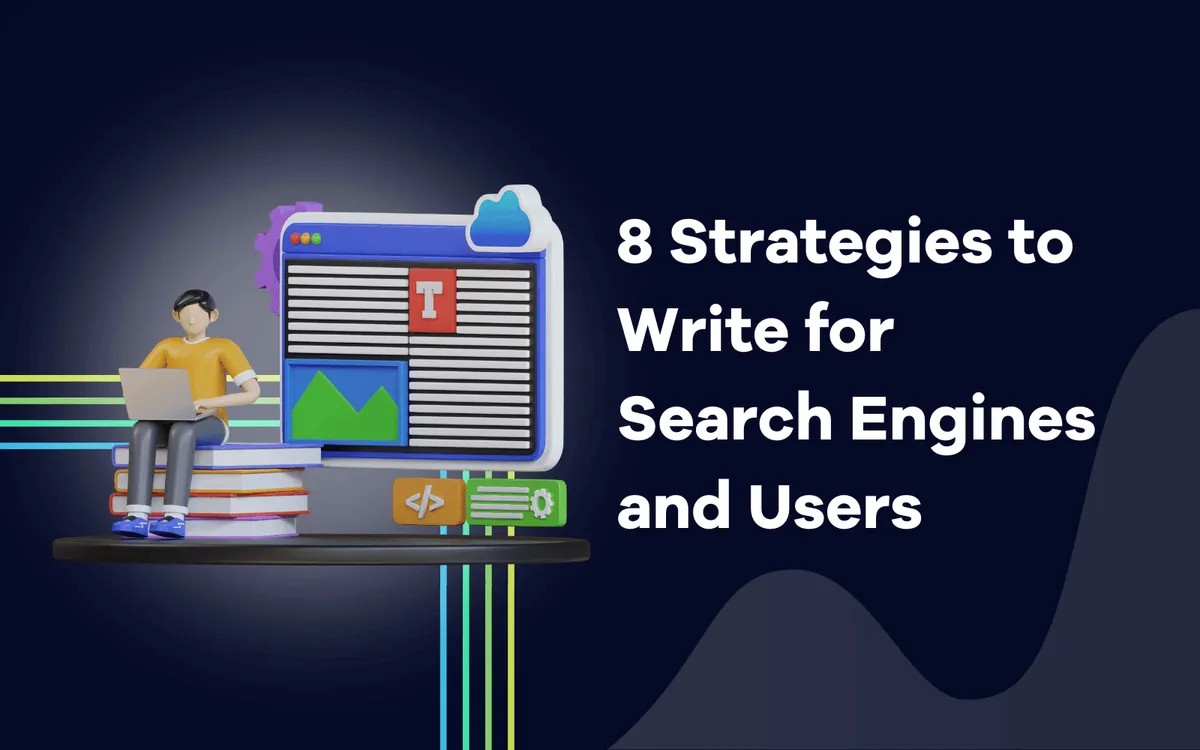
SEO Copywriting: 8 Strategies to Write for Search Engines and Users

Erik Emanuelli
February 15, 2024
Master SEO copywriting with 8 strategies for optimal search engine rankings and user engagement. Elevate your online presence now!
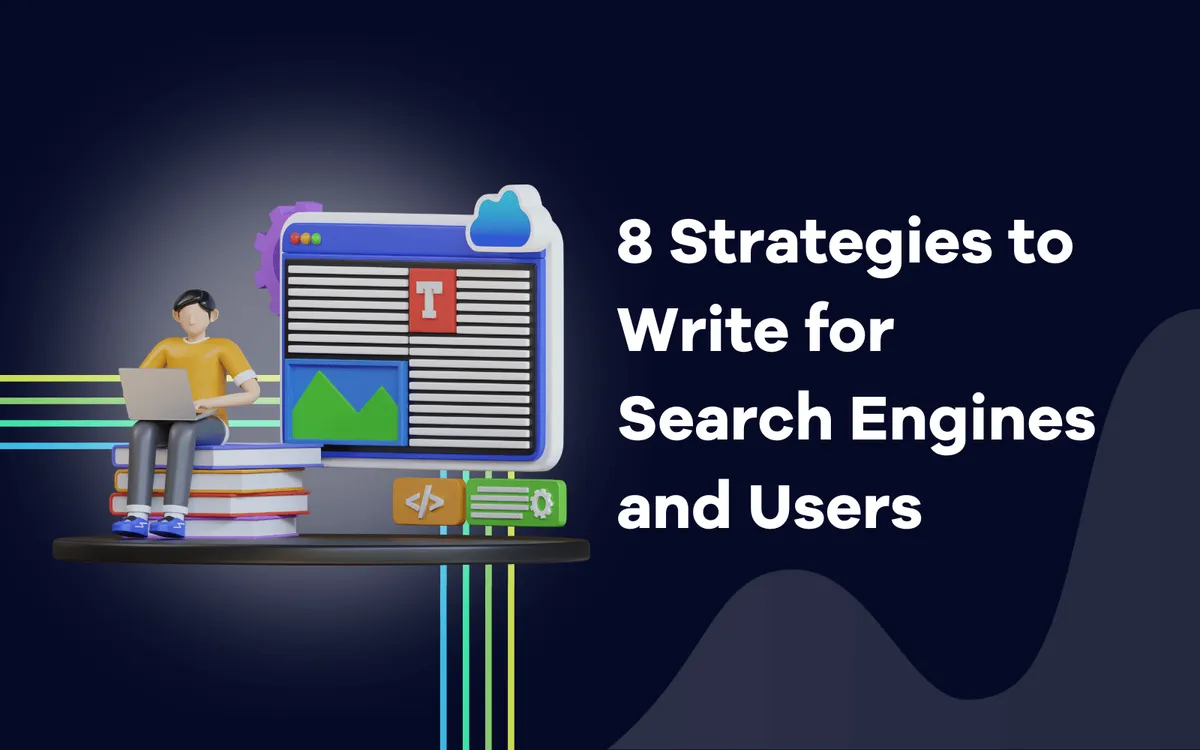
SEO copywriting is more than just stuffing keywords into your content and hoping for the best on the SERPs. It's an art that combines persuasive writing with on-page optimization strategies to captivate readers and climb the rankings.
As a digital marketer or content creator, mastering this technique not only enables you to create copies that resonate with your audience but also ensures that you're ticking all the right boxes for search engines.
So, are you ready to dominate the rankings?
Read eight proven strategies to sharpen your skills for the web.
What Is SEO Copywriting?
SEO copywriting is the art of creating content that is specifically designed to rank in search engines, while also appealing to human readers.
It involves understanding the nuances of what search engines value while ensuring that your writing is compelling and engaging for your users.
Now, do you want to know a secret?
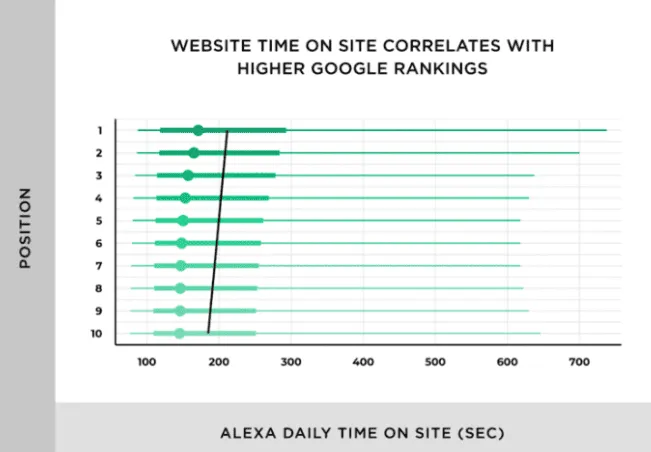
According to a Backlinko study, websites with higher time on site tend to have better rankings on Google.
So, what does it mean for you?
It means that if your content is engaging enough to keep visitors on your page for longer periods, search engines will take notice and may reward your site with higher rankings.
Retaining visitors is a clear indication that your pages are valuable and relevant to their search queries. To achieve this, your copy must be informative, easy to read, and provide a satisfying answer to the questions your audience is asking.
Remember, it's not about having your keywords appear a certain number of times but how you integrate those terms seamlessly into high-quality copies to stand out in the vast ocean of information on the internet. That’s why your SEO and content marketing should work together.
The Search Engine-Friendly Component:
Keyword Research: Identifying the right terms to target in your content ensures you're reaching your intended audience.
On-Page Optimization: Using SEO best practices such as meta tags, headers, and image alt text to make your copy more digestible for search engine crawlers.
The Human Appeal Aspect:
Persuasion Techniques: Employing psychological triggers to make your content more engaging and persuasive.
Reader Intent: Understanding what your readers are looking for and delivering on their expectations.
With this balance in mind, let's delve in.
8 SEO Copywriting Strategies for Dominating Search Engine Rankings and Entice Users
SEO copywriting is ever-evolving, but these eight strategies will build a strong foundation for your approach:
Master the Art of Keyword Integration
Optimize Your Meta Tags
Match Search Intent
Prioritize Readability
Answer Your Audience's Questions
Create Original Researches
Use Rich Media
Encourage Engagement
Master the Art of Keyword Integration
Integrating keywords into your content is a balancing act. On one hand, you want to ensure that your target terms are present for search engine crawlers to identify and rank your content. On the other hand, you want to use them sparingly and don’t make your copy sound forced or unnatural.
So, when selecting keywords, consider their relevance and intent. Answer this question:
What is the purpose of the search query and how can your content provide value to the user?
Use keywords in a way that supports the overall message and theme of your brand.
Practical Advice. Other than integrating your target terms in the page title, URL, body content, and image alt tags, use LSI keywords to add variety and context to your content. You can find them at the bottom of Google's search results page when you type a query (in the "Related Searches" box).
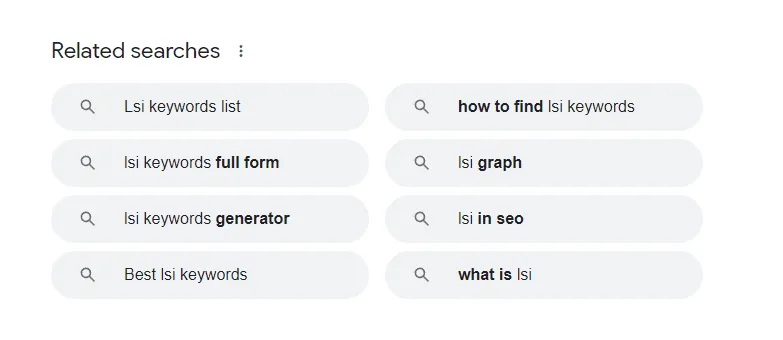
Optimize Your Meta Tags
Your meta tags—an encompassing term for meta titles and meta descriptions—are crucial components that influence user click-through rates from search engine result pages.
A well-crafted meta title should incorporate your target keywords and entice users with a clear value proposition. Meanwhile, the meta description acts as an ad copy that summarizes page content with a compelling call to action. Both elements should accurately reflect the content of the page while being succinct and enticing.
Practical Advice. Start your title tag with the target term and keep it under 60 characters to ensure it displays fully on SERPs. Meta descriptions should be kept under 160 characters and include a call-to-action. Although meta descriptions don't directly affect rankings, they do impact user engagement, which is a signal for search quality.

Match Search Intent
While keywords are important, it's equally essential to understand the intent behind a search query.
Google aims to provide users with the most relevant and useful results based on their search intent. Therefore, your content should align with the purpose of a user's search query.
For instance, if someone is searching for "how to make chocolate chip cookies," they are likely looking for a recipe or instructions. If your page is about the history of chocolate chip cookies, it may not be the best match and could result in a high bounce rate.
Practical Advice. Research common search queries related to your topic and analyze the type of content that appears on the first page of the results. This will give you insight into the search intent and help ensure your content aligns with it. Additionally, consider including variations of your primary keyword to capture a broader range of search queries.
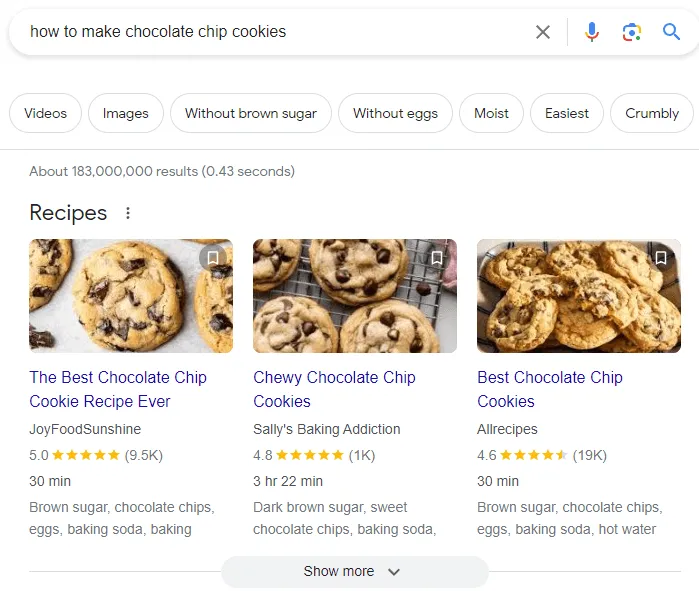
Prioritize Readability
In addition to keyword usage and search intent, readability is crucial for user engagement. If your content is difficult to understand or overwhelming, users will likely leave your page.
Make sure your font size and style are easy to read, and break up large chunks of text with headings, lists, and images.
You can also use the bucket brigade technique, which involves using short phrases or questions to keep readers engaged and interested in your content.
Remember, the goal is to provide valuable information in a way that is easy for users to consume and understand.
Practical Advice. Use tools like Grammarly or Hemingway App to improve the readability of your content. Avoid using complex jargon and stick to a conversational tone. Incorporate visuals and multimedia to break up text and keep readers engaged. Always proofread your content for grammar and spelling errors before publishing.
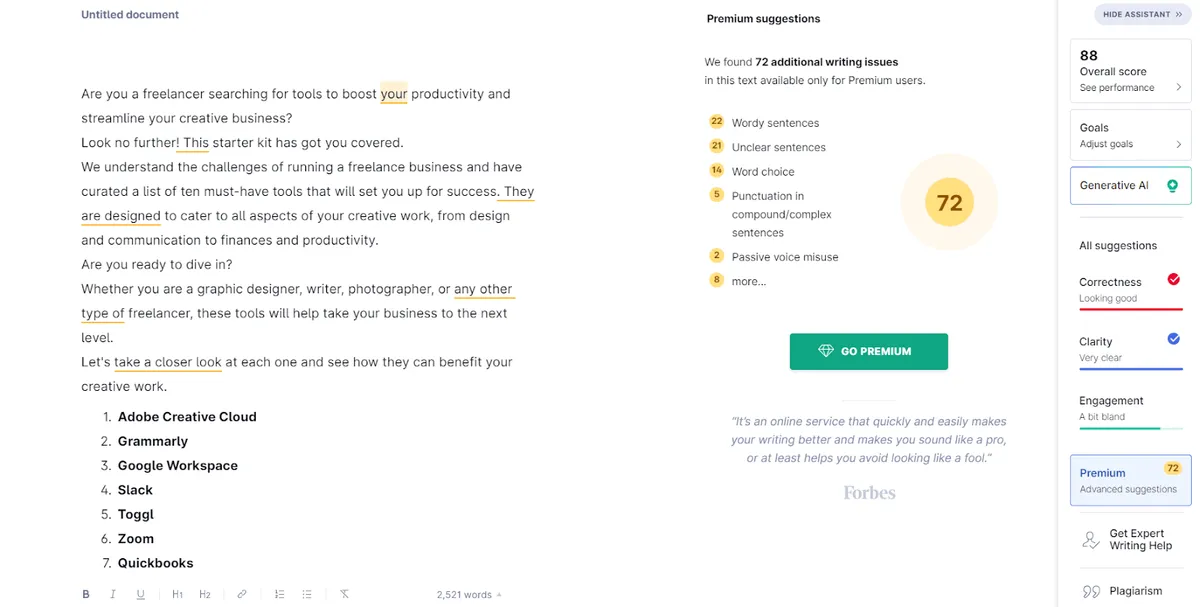
Answer Your Audience's Questions
Understanding your audience's needs is fundamental to crafting content that resonates and provides value.
Think about the questions your readers might have when they come across your content, and aim to answer them comprehensively.
You can run surveys, polls, search forums, and online communities, or ask for feedback from your audience directly through comments or social media.
By addressing your audience's questions and concerns, you establish yourself as an authority in your industry and build trust with your readers.
Practical Advice. Use tools like Answer the Public to discover common questions related to your topic. Read reviews and comments on similar content to understand what your audience is looking for. And don't be afraid to directly ask your audience what they want to learn from you.
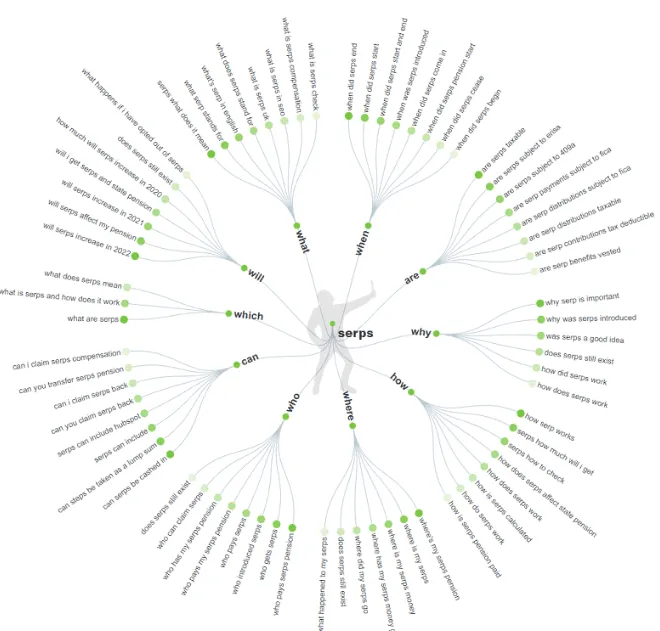
Create Original Researches
Original researches add value to your content and differentiate it from the rest of the crowd.
By conducting surveys, experiments, or studies related to your topic, you can provide unique insights and data that can't be found elsewhere.
This not only establishes your credibility but also attracts backlinks and social shares from other websites.
Practical Advice. Use tools like SurveyMonkey or Google Forms to create surveys and gather data from your audience. Consider partnering with other experts or businesses in your industry to conduct a joint study or experiment for more impactful results. And always properly cite and reference your sources to maintain credibility. For example, this popular original research by Ahrefs, based on a study of over one billion pages, shows that more than 90% of internet pages do not receive any organic traffic.
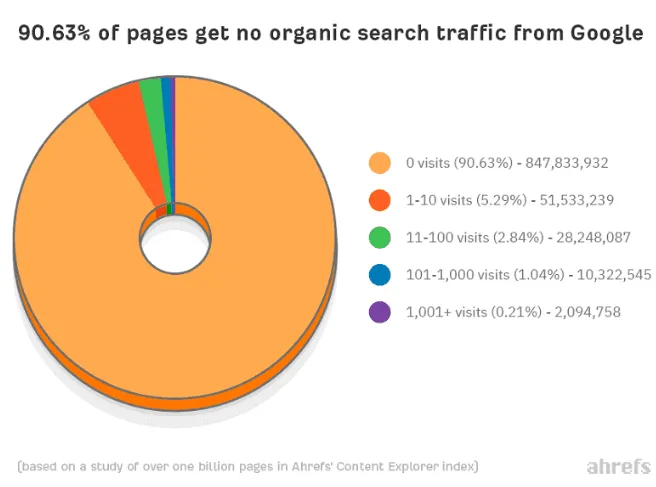
Use Rich Media
In today's digital age, content is not limited to just text. Use a mix of rich media such as images, videos, infographics, and interactive elements to enhance your content and engage your audience.
Visual aids can help break up large chunks of text and make your content more digestible. They also provide an opportunity to showcase data or complex concepts in a more simplified and easily understandable format.
Additionally, including videos or interactive elements like quizzes or polls can increase the time spent on your content and improve its overall value for readers.
Practical Advice. Use high-quality images that are relevant to your topic and enhance the visual appeal of your content. Create informative and visually appealing infographics using tools like Canva or Piktochart. And don't be afraid to get creative with interactive elements - the more engaging and interactive your content is, the more likely it is to be shared and referenced by others. Remember to always provide proper attribution for any media used in your content. For example, the following image visually explains what are orphan pages.
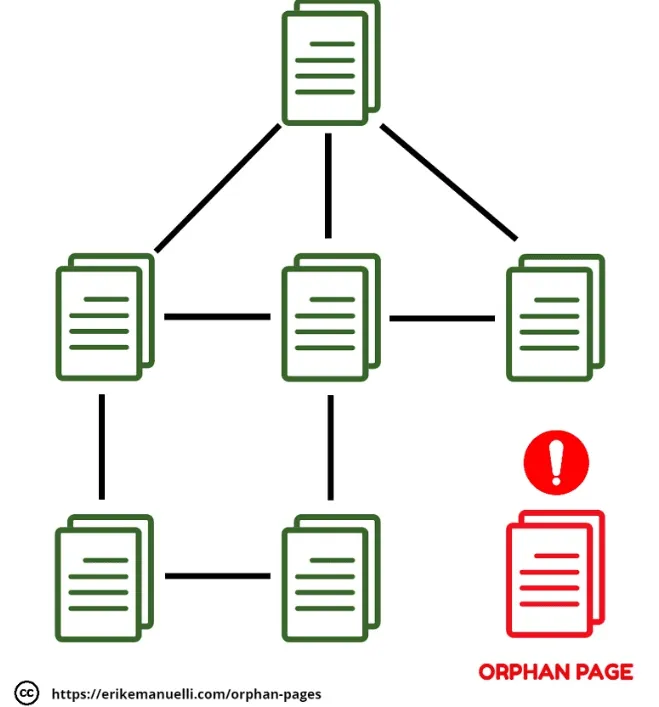
Encourage Engagement
Your content should not be a one-way conversation. Encourage engagement from your readers by asking questions, soliciting feedback, and including calls to action throughout the piece.
This allows for a more interactive experience for the reader and can also help you gather valuable insights and feedback on your content. It also creates a sense of community and connection with your audience, making them more likely to return for future content.
You can add a call to action at the end of each section, asking readers to share their thoughts or experiences related to the topic discussed. You can also include surveys or polls directly in your content to gather specific feedback.
Remember to always respond to comments and engage with your audience - this shows that you value their input and are genuinely interested in their thoughts and opinions. This level of engagement can help build trust with your readers and establish you as an authority on the subject matter. So don't be afraid to interact with your audience and keep the conversation going!
Practical Advice. Use catchy buttons or callouts to encourage readers to take action, such as 'Click here for more tips' or 'Share your thoughts in the comments'. This will not only make your content more visually appealing but also increase the chances of reader engagement. For example, this post on ModestMoney has a clear call to action in the body: "Learn More About Simplifi".
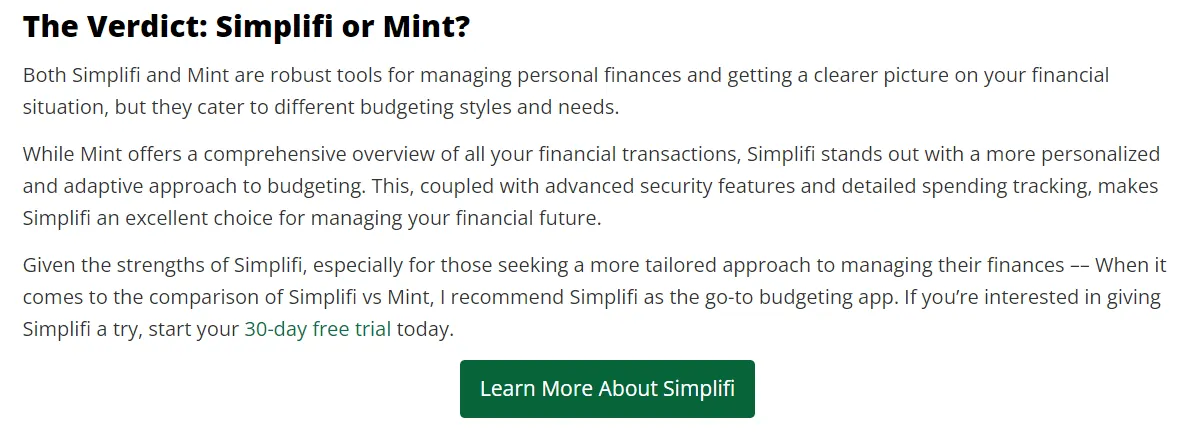
Final Words
At the end of your content, remember to leave a lasting impression by summarizing key takeaways and offering further resources for readers to explore. This can include links to related articles or books, relevant social media pages or communities, and any other helpful tools or materials.
The tone of voice should remain informative and instructional throughout - avoid using aggressive language, as this can be off-putting to readers. Instead, focus on providing valuable information and guidance that will benefit your audience. With an educational and approachable tone, you can establish a strong connection with your readers and foster a loyal following for your brand.
So keep these tips in mind as you continue creating content, and always prioritize simplicity, clarity, and accessibility in your writing. Your readers will thank you for it!
Related blog posts
The Hidden Flaws in Search Volumes and How to Solve Them
Learn how AI Search Volume delivers reliable search volumes by combining GKP, GSC, and Trends so that you can prioritize the right keywords.
1 July 2025
AI Overviews Are Taking Over SERPs
From traffic drops to decreasing CTRs, AI Overviews are shaking up SEO. Learn what is happening and how AccuRanker helps you track AIO.
25 June 2025
How AccuRanker’s AI Models Fix Inaccurate SEO Data
Struggling with unreliable SEO data? Discover how AccuRanker’s CTR, Search Intent, Search Volume, and Share of Voice deliver accurate insights.
1 June 2025




